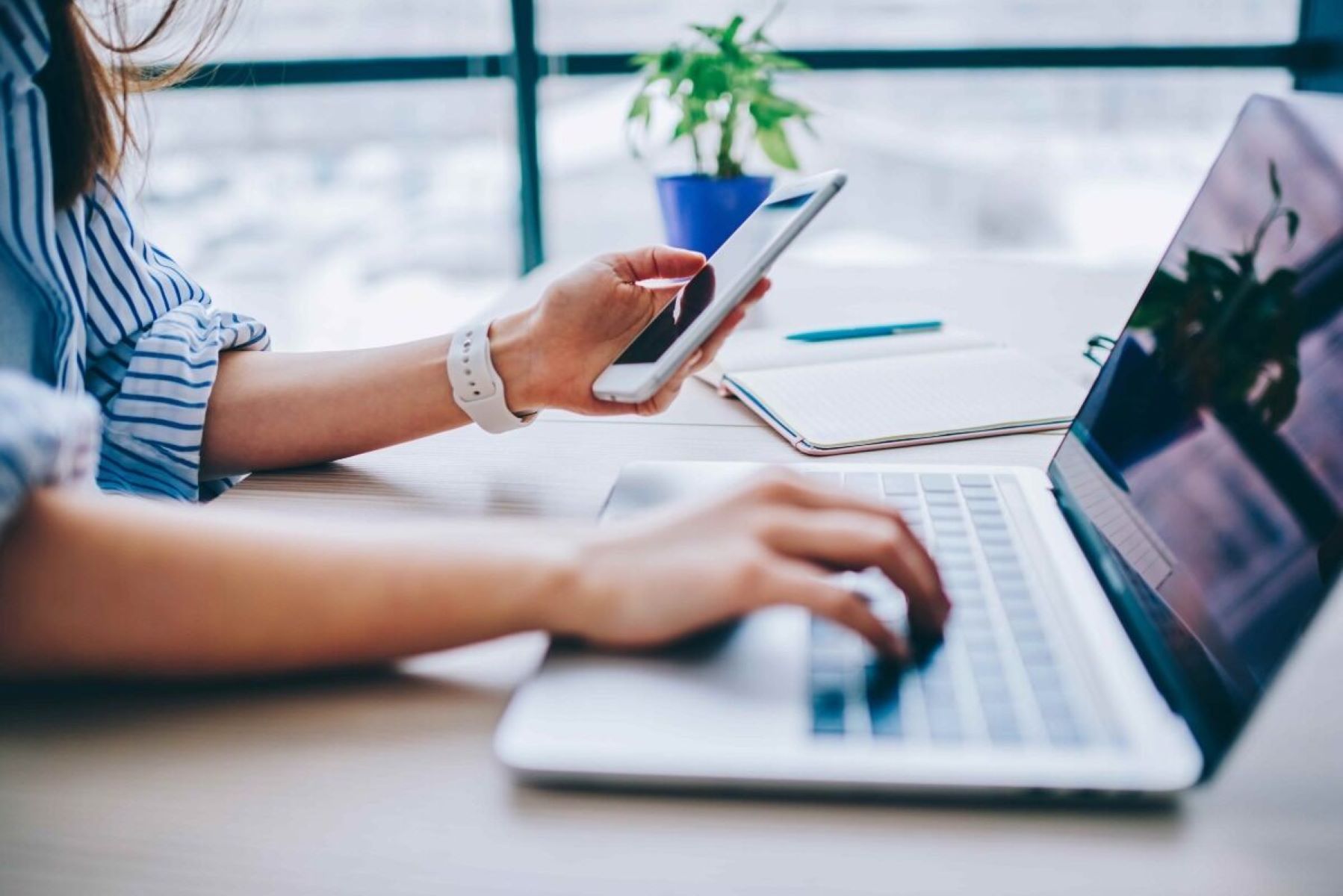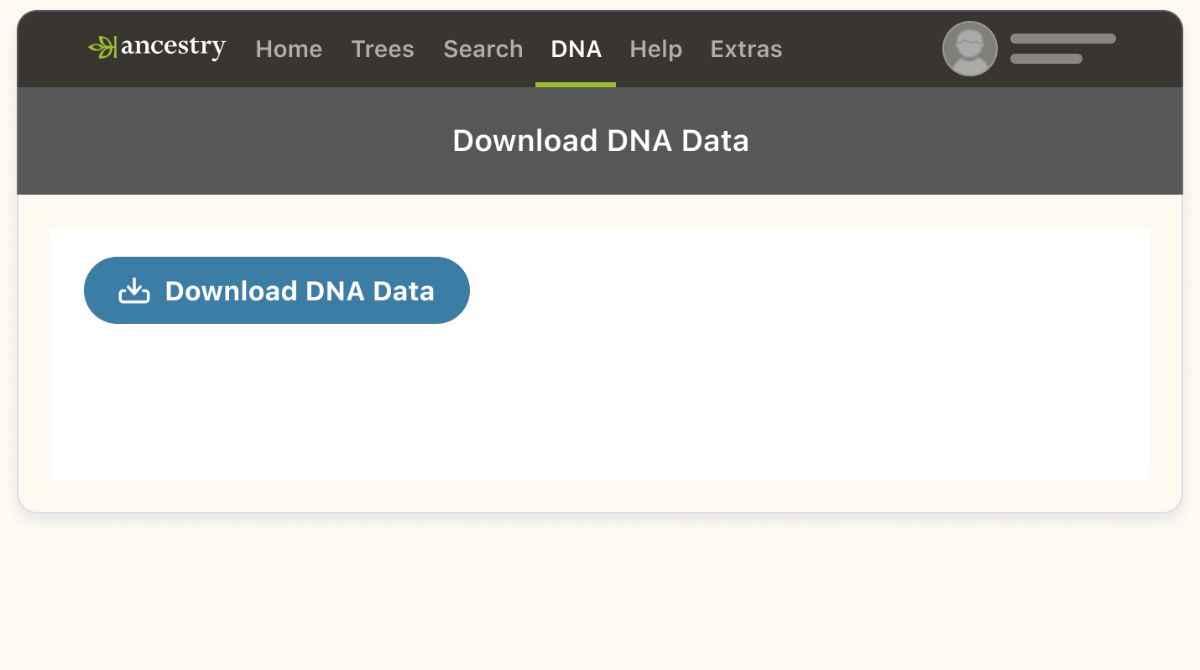Introduction
Welcome to the world of email communication! With the rise of technology, email has become an essential tool for professional and personal communication. Whether you’re at work or dealing with a personal matter, knowing how to ask for something effectively in an email can make a significant difference in achieving your desired result. Crafting a well-written email that clearly conveys your request in a polite and concise manner can enhance your chances of receiving a positive response.
However, it can be challenging to strike the right balance in an email – being too direct may come across as rude, while being overly polite may make you seem hesitant. In this article, we will explore ten valuable tips on how to ask for something in an email successfully.
By following these tips, you can create an email that is not only compelling but also increases the likelihood of receiving a favorable response. Whether you’re seeking assistance from a colleague, asking for a favor, or reaching out to a potential client, mastering the art of asking for something in an email will set you on the path to achieving your goals.
Tip 1: Be Clear and Concise
When asking for something in an email, clarity is key. It’s essential to clearly state what you’re asking for without leaving any room for confusion or ambiguity. Be direct and specific about your request, providing all the necessary details to ensure that the recipient understands your needs.
Start by introducing your request in a concise and straightforward manner right at the beginning of the email. Avoid beating around the bush or including unnecessary information that might distract from your main objective. Get straight to the point, focusing on the key details that the recipient needs to know.
Additionally, organize your thoughts coherently and present your request in a logical order. Use paragraphs or bullet points to break down complex information, making it easier for the reader to digest. By being clear and concise, you help the recipient understand your request quickly and efficiently, increasing the chances of a positive response.
Remember to keep your sentences and paragraphs short. Long, convoluted sentences can lead to confusion, so opt for straightforward and concise language. Use simple yet impactful words to convey your intention effectively. Avoid overly technical jargon unless necessary, as it may alienate the recipient and hinder their understanding of your request.
Lastly, proofread your email to ensure that it is error-free and free from any grammatical mistakes or typos. Clear and concise communication eliminates any potential misunderstandings and demonstrates your professionalism and attention to detail.
Tip 2: Use a Polite and Professional Tone
When asking for something in an email, it’s crucial to maintain a polite and professional tone throughout the message. Politeness goes a long way in establishing a positive impression and fostering a respectful relationship with the recipient.
Begin your email with a warm and courteous greeting, such as “Dear [Recipient’s Name],” or “Hello,” followed by an appropriate salutation. This sets a friendly tone from the outset and shows that you value the recipient’s time and attention.
Expressing your request politely is equally important. Use phrases like “I would greatly appreciate it if you could,” or “Would you mind,” to convey your request in a considerate manner. It’s essential to avoid sounding demanding or entitled, as this can put the recipient off and lessen the chances of a favorable response.
Additionally, maintain a professional demeanor throughout the email. Use formal language and refrain from using colloquial or informal phrases. Using the appropriate level of formality demonstrates respect and establishes credibility.
Another key aspect of maintaining a polite and professional tone is to use proper email etiquette. This includes using proper grammar, spelling, and punctuation, as well as avoiding excessive use of abbreviations or emojis. These elements contribute to the overall professionalism of your message.
Moreover, it’s crucial to avoid any negative or confrontational language in your email. Even if you feel frustrated or impatient, it’s best to approach the situation calmly and constructively. Be mindful of your tone and ensure that your email portrays a positive and respectful attitude.
Lastly, don’t forget to show appreciation for the recipient’s time and consideration. Include a closing statement that expresses gratitude, such as “Thank you in advance for your assistance,” or “I appreciate your attention to this matter.” Demonstrating gratitude not only shows your professionalism but also reinforces a positive relationship with the recipient.
Tip 3: Provide Context
When asking for something in an email, it’s important to provide the necessary context to help the recipient fully understand your request. By offering background information and providing relevant details, you enable the recipient to make an informed decision and respond appropriately.
Start by briefly introducing yourself and establishing a connection with the recipient, especially if you are contacting them for the first time. This helps to establish rapport and makes your request more personalized and relatable.
Next, provide a clear explanation of why you are making the request. Clearly articulate the purpose and significance of your request, highlighting its relevance and potential benefits. This will help the recipient understand the importance of your request and increase their willingness to assist you.
Furthermore, including any relevant timelines or deadlines can help set expectations and allow the recipient to prioritize your request accordingly. If there is a specific timeframe within which you need a response or action, make sure to communicate it clearly. This helps the recipient plan and allocate their time effectively.
In addition, providing any supporting documents or additional information that substantiate your request can be valuable. Attach relevant files or provide links to relevant resources that can provide further details and assist the recipient in understanding the context of your request. This added information demonstrates your preparedness and commitment to ensuring a smooth and informed decision-making process.
However, it’s important to strike a balance and avoid overwhelming the recipient with excessive information. Be selective in what you include and focus on providing the most pertinent details. A concise yet comprehensive explanation will enable the recipient to grasp the context quickly and proceed with the necessary action or response.
By providing the right context, you empower the recipient to make an informed decision and improve the chances of a favorable outcome. It allows them to see the bigger picture and understand the importance and value of your request.
Tip 4: Use a Subject Line that Highlights the Request
When composing an email, the subject line is often the first thing the recipient sees. It plays a crucial role in capturing their attention and conveying the nature of your request. To maximize the chances of your email being opened and read promptly, it’s important to craft a subject line that highlights the essence of your request.
Start by keeping the subject line concise and specific. Avoid using vague or generic subject lines that could be easily overlooked or misunderstood. Instead, provide a clear indication of what your email is about, potentially incorporating keywords or phrases related to your request.
Try to make your subject line impactful and attention-grabbing. Use action-oriented language or words that convey a sense of urgency, when appropriate. This will prompt the recipient to prioritize your email and address your request promptly.
Additionally, incorporating personalization in the subject line can help make your email stand out. If applicable, include the recipient’s name or a specific reference that indicates the relevance of your request to them. This shows that you have taken the time to tailor your email specifically to them, increasing the likelihood of a positive response.
Another helpful tip is to make your subject line unique and avoid using generic phrases or common email clichés. Stand out from the crowd by using a subject line that is original and piques the recipient’s curiosity. This will make your email more memorable and increase the chances of it being opened and read.
Lastly, remember to be truthful and accurate in your subject line. Avoid using misleading or clickbait-style subject lines that may lead to disappointment or frustration for the recipient. Honesty and transparency are key in building trust and maintaining a positive professional relationship.
By using a subject line that clearly and effectively highlights your request, you increase the chances of your email being noticed and acted upon. A well-crafted subject line sets the right tone for your email and helps to establish the recipient’s expectations from the very beginning.
Tip 5: Make Your Request Specific and Actionable
When asking for something in an email, it’s important to be specific and provide clear instructions on what you need from the recipient. Vague or ambiguous requests can lead to confusion and delays in getting the desired outcome. By making your request specific and actionable, you increase the chances of receiving a positive response.
Start by clearly stating what you are requesting. Be explicit about the specific task, information, or action you need the recipient to take. Avoid using vague language or open-ended questions that leave room for interpretation. Instead, provide precise details that leave no room for ambiguity.
It can be helpful to break your request down into actionable steps, especially if it involves multiple tasks or a series of actions. Clearly outline each step, making it easier for the recipient to understand what needs to be done and how to proceed. This level of clarity reduces the potential for misunderstandings and streamlines the process.
Moreover, if applicable, provide any necessary supporting materials or resources that can assist the recipient in fulfilling your request. This could include attachments, links, or references to relevant documents or websites. By providing the necessary resources, you facilitate the execution of the task and help the recipient fulfill your request more effectively.
Specify any deadlines or time frames within which you need the requested action to be completed. Setting clear expectations regarding timing allows the recipient to prioritize your request and allocate their resources accordingly. It also helps you plan your own workflow if there are dependencies on their response or action.
Furthermore, if any specific formatting, file types, or preferences are required, communicate them clearly. For example, if you need a report in PDF format, or if you have specific branding guidelines for a presentation, make sure to provide those details upfront. This ensures that the recipient delivers the requested materials in the format you require.
By making your request specific and actionable, you facilitate a clear understanding of your expectations and increase the chances of a successful outcome. The recipient will appreciate the clarity and specific guidance, making it easier for them to fulfill your request accurately and efficiently.
Tip 6: Use a Friendly Tone and Personalize the Email
When asking for something in an email, it’s important to strike a friendly and personable tone. Incorporating a warm and approachable style can help establish a connection with the recipient and increase the likelihood of a positive response. Additionally, personalizing the email adds a human touch and shows that you value the relationship.
Start by addressing the recipient by their name. Using their name in the greeting creates a personalized touch and shows that you have taken the time to address them specifically. Avoid using generic greetings like “To whom it may concern” whenever possible.
Adopt a conversational style in your writing. Use a tone that is friendly, yet professional, to make the email feel more personal and approachable. This helps to build rapport with the recipient and encourages them to be more receptive to your request.
Personalize your email by referring to any previous interactions or shared experiences you may have had with the recipient. This could include mentioning a recent conversation, a mutual acquaintance, or an event you both attended. Showing that you remember these details reinforces the connection and makes your email more meaningful and memorable.
Additionally, consider using the recipient’s preferred communication style or addressing any specific interests they may have. For example, if you know they are passionate about a particular topic or hobby, you can include a brief reference to that in your email. This demonstrates that you have taken the time to understand their interests and adds a personal touch.
When appropriate, it can be effective to use small talk or pleasantries in your email. Begin the email with a genuine inquiry about the recipient’s well-being or a brief comment about a recent event. This helps to create a friendly and relaxed atmosphere before introducing your request.
Finally, conclude your email with a warm and friendly closing. Use phrases like “Looking forward to hearing from you,” or “Thank you for considering my request.” This shows gratitude and anticipation while maintaining a polite and personable tone.
By using a friendly tone and personalizing your email, you establish a connection with the recipient, making them more likely to respond positively to your request. It shows that you value the relationship and are genuinely interested in engaging with them on a personal level.
Tip 7: Offer Something in Return
When asking for something in an email, it can be beneficial to offer something in return. Providing value or showing a willingness to reciprocate can create a sense of mutual benefit and increase the likelihood of a positive response from the recipient.
Start by considering what you can offer that would be valuable to the recipient. This could be a skill, knowledge, experience, or access to resources. Think about what you have that could be beneficial to them in some way.
Clearly communicate the value of what you are offering and explain how it can be advantageous to the recipient. Highlight the benefits they will gain by accepting your request and emphasize the mutual advantage of the exchange.
If you are not able to offer something tangible, such as a product or service, you can still provide assistance or support. Express your willingness to help the recipient with any future projects or tasks they may need assistance with. This shows that you are committed to building a mutually beneficial relationship based on support and cooperation.
Keep in mind that the offer should be genuine and aligned with the recipient’s needs and interests. Avoid making empty promises or offering something that you cannot deliver. Building trust is essential, and offering something that is valuable and achievable reinforces your credibility.
Furthermore, make it clear that accepting your offer is optional and that there is no expectation of reciprocation. Although offering something in return is appreciated, it should not create a sense of obligation for the recipient.
By offering something in return, you demonstrate your willingness to contribute and establish a sense of reciprocity. This enhances the relationship and increases the recipient’s motivation to assist you with your request.
Tip 8: Keep the Email Short and to the Point
When asking for something in an email, it’s crucial to keep the message concise and direct. Long, rambling emails can be overwhelming and may cause the recipient to lose interest or miss the main point of your request. By keeping the email short and to the point, you increase the chances of your message being read and understood.
Start by organizing your thoughts before composing the email. Create a clear outline or bullet points of the key points you want to convey. This helps you stay focused and ensures that you communicate your request efficiently.
Avoid unnecessary details or lengthy explanations. Stick to the essential information that the recipient needs to know to fulfill your request. Be concise and avoid using overly complex or technical language. Use simple, straightforward language that is easy to understand.
Break down your request into logical sections or bullet points to make it easier for the recipient to follow. Use paragraph breaks and subheadings if necessary to provide clarity and structure to your email. This makes it more digestible and allows the recipient to quickly identify the main points.
Consider the recipient’s time and attention span. Assume that they receive a high volume of emails and have limited time to read and respond. Respect their time by keeping your email focused and avoiding unnecessary tangents or unrelated information.
If there are additional details that may be relevant but not crucial to the initial request, consider providing them as optional supplementary information or attachments. This allows the recipient to access the additional information if they require it without overwhelming them with an excessively long email.
Before sending the email, review it for any unnecessary words or phrases that can be eliminated. Streamline your sentences and ensure that every word has a purpose. The goal is to convey your request concisely and effectively.
By keeping the email short and to the point, you respect the recipient’s time and make it easier for them to understand and prioritize your request. A concise and well-structured email increases the chances of a prompt and favorable response.
Tip 9: Use a Closing Statement and Express Gratitude
When asking for something in an email, it’s important to conclude your message with a closing statement and an expression of gratitude. A well-crafted closing can leave a lasting impression and show your appreciation for the recipient’s time and consideration.
Start by summarizing your request in a clear and concise manner in the closing statement. Restate the main point of your email, ensuring that it is the last thing the recipient reads. This reinforces the importance of your request and ensures that it sticks in their mind.
After restating your request, express your gratitude to the recipient for taking the time to consider your email and for any anticipated assistance. Use phrases like “Thank you for your attention to this matter,” or “I appreciate any help you can provide.” Acknowledging the recipient’s time and effort demonstrates your understanding of their busy schedule and reinforces a positive and respectful tone.
Additionally, if appropriate, offer your assistance in return or express your willingness to reciprocate their kindness. This further emphasizes your commitment to establish a mutually beneficial relationship and fosters goodwill between you and the recipient.
End the email with a polite and professional closing, such as “Sincerely,” or “Best regards,” followed by your name. This provides a formal and respectful ending to your email.
Before sending the email, take a moment to read it again and ensure that your closing statement and expression of gratitude align with the overall tone of the email. Make any necessary adjustments to maintain consistency and authenticity in your message.
Remember that a sincere and thoughtful closing statement and expression of gratitude can leave a positive impression on the recipient. It shows that you value their time and effort and further encourages them to respond positively to your request.
Tip 10: Follow Up if Necessary
After sending your initial email, it’s important to be mindful of the recipient’s response and follow up if necessary. Sometimes, you may not receive a response right away, or the recipient may require more time to address your request. In such cases, a follow-up email can help ensure that your request receives the attention it deserves.
When following up, it’s important to be patient and respectful of the recipient’s time. Wait an appropriate amount of time before sending a follow-up email, typically around one week, depending on the urgency of your request or the nature of your relationship with the recipient.
In your follow-up email, politely reference your initial email or request, reminding the recipient of the details and providing any additional information that may be necessary. Be concise and to the point, ensuring that your follow-up email is as clear and straightforward as your initial message.
Express your understanding and appreciation for their busy schedule, while reiterating the importance or urgency of your request. Use phrases like “I understand you may be busy,” or “I wanted to kindly follow up regarding my previous email.” This demonstrates your respect for their time and helps to reinforce the significance of your request.
If possible, offer any updates or new information that may be relevant. This can be helpful in showing that you have been proactive and engaged in finding a solution or addressing any concerns that may have arisen since your initial email.
End your follow-up email with a polite closing statement and expression of gratitude, just as you did in your initial email. Reiterate your appreciation for their consideration and let them know that you are available for any further discussion or clarification.
Remember to respect the recipient’s response, even if it is not the answer you were hoping for. If they have expressed their inability to fulfill your request, thank them for their consideration and explore alternative solutions, if applicable. Maintaining a positive and professional attitude in your follow-up email is crucial.
By following up in a polite and respectful manner, you demonstrate your commitment and determination to achieve your goal. A well-timed and considerate follow-up email can increase the chances of receiving a response and help move your request forward.
Conclusion
Asking for something in an email can be an art form, requiring careful consideration of tone, clarity, and professionalism. By following the ten tips outlined in this article, you can improve your effectiveness in making requests and increase the chances of receiving positive responses.
Being clear and concise is essential in conveying your request effectively. Provide all the necessary details without overwhelming the recipient with unnecessary information. Use a polite and professional tone throughout the email, demonstrating respect and consideration.
Providing context helps the recipient understand the significance and relevance of your request. Use a subject line that highlights your request to capture attention, and make your request specific and actionable to facilitate a prompt response.
Adding a friendly tone and personalizing your email helps build rapport with the recipient. Offering something in return creates a sense of mutual benefit, while keeping the email short and to the point respects the recipient’s time and attention.
Expressing gratitude in your closing statement shows appreciation for the recipient’s consideration. Lastly, if necessary, follow up politely and respectfully, allowing for additional communication and clarification.
By implementing these tips, you can write compelling and effective emails when making requests. Remember to adapt these tips based on the context, relationship, and specific requirements of your email recipients. With practice and consideration, you can master the art of asking for something in an email and achieve your desired outcomes.

























